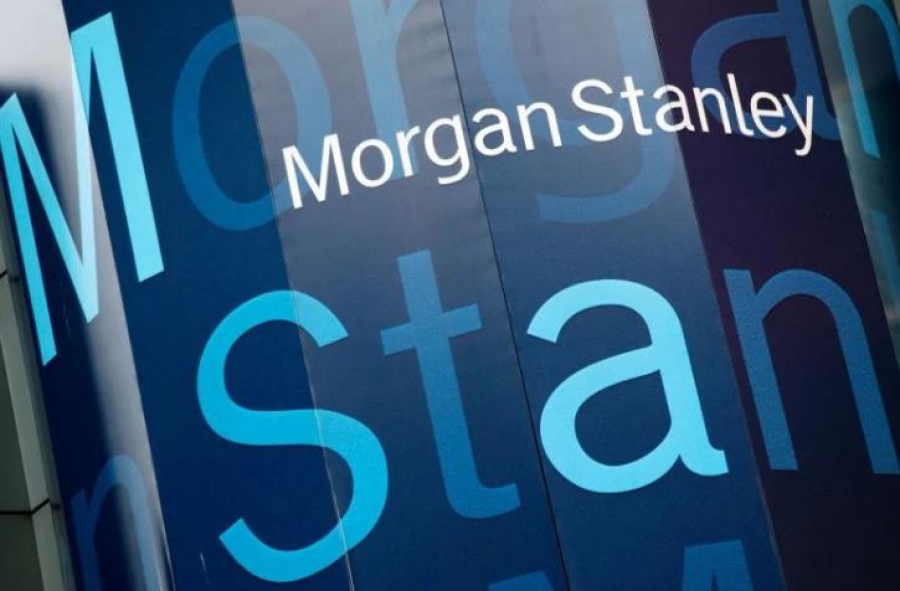
As Morgan Stanley points out, the US currency has always played the role of the world’s transactional and reserve currency.
Is the dollar really under threat? US bank Morgan Stanley asked in a recent analysis.
As he points out, the US currency has always played the role of global transaction and reserve currency.
It serves as a vehicle for buying and selling goods, as well as a safe haven for foreign exchange reserves for financial institutions and companies around the world.
Its dominant position gives the United States significant economic advantages.
Because international trade is largely denominated in dollars, American businesses and consumers in general are less likely to face higher foreign exchange transaction costs or risks from changing exchange rates.
In addition, strong global demand for dollar-denominated securities such as US Treasury bonds has allowed the US government to borrow at relatively low interest rates to fund its needs.
emerging concerns
But some investors fear the dollar may lose its dominance since it replaced the British pound as the world’s largest reserve currency after World War Two.
Recently, in fact, anxiety has erupted amid geopolitical tensions that may boost other currencies, for example the euro, the Chinese renminbi or even a proposed common currency between the BRICS member states, namely Brazil, Russia, India, China and South Africa.
It should be noted that the concept of de-dollarization has been on investors’ radars for about 20 years – in fact, the dollar’s share of reserve currencies has gradually declined as foreign central banks have chosen the path of diversification.
In theory, competition from other currencies could hurt demand for the dollar, causing it to drop in value in the foreign exchange markets and reversing some of the benefits that its dominance has provided to American institutions and investors.
The threats seem exaggerated
but, The current role of the US dollar The global economy is unlikely to face serious challenges any time soon for major reasons:
1. The US dollar It remains the world’s dominant “medium of exchange” or means of buying and selling goods.
In March, for example, the Society for Worldwide Interbank Financial Telecommunications (SWIFT) reported that it is the most used currency in the global payment system, accounting for 41.7% of payments, followed by the euro.
In comparison, the Chinese renminbi was used in 2.4% of SWIFT payments, even though China accounts for a relatively larger share of global trade.
2. The dollar remains The basic “unit of account” throughout the world, meaning that it is the standard way by which trading partners measure the value of exchanged goods and services.
According to the Federal Reserve, from 1999 to 2019, the US dollar accounted for 96% of trade tariffs in the Americas, 74% in the Asia-Pacific region and 79% in the rest of the world.
The only exception was in Europe, where the euro is the main billing currency, given the frequent trade between EU partners.
3. The dollar is considered A widely trusted “store of value” or safe haven.
Largely because of this stability relative to other currencies, it accounts for nearly 60% of foreign reserves (i.e. currencies held by central banks to help manage their country’s monetary system and exchange rate).
Although the dollar’s share of the Central Bank’s product reserves has decreased over time, the shares of all its competitors are still at an embryonic level.
In addition, according to the Brookings Institution, more than 65 countries peg their currency to the US dollar.
4. Offline There is no viable alternative. Other currencies have been discussed as potential competitors to the dollar, but none come close to posing a credible threat — at least not yet.
A- The euro is the second largest reserve currency in the world, but it comes in second place, as it represents 21% of foreign exchange reserves, compared to about 60% for the dollar.
Key factors preventing widespread use of the euro: According to the National Bureau of Economic Research, there is a short supply of high-quality euro assets that international investors and central banks can use as a store of value.
b- The Chinese renminbi represents a very small part of foreign exchange reserves, and the control of the exchange rate by Chinese policy makers makes it unlikely that it will quickly gain momentum.
c. Gold is expensive to carry around, making it a less than ideal medium of exchange or unit of account.
Dr.. The common currency of the BRICS countries is still in the realm of fantasy.
BRICS member states may find central bank coordination difficult and ultimately prove reluctant to trade off their dependence on the US dollar for a potentially unstable currency that is difficult to adopt widely.
Under these circumstances, it will be difficult to break away from the dollar-centric system.
It is entirely possible that several major reserve currencies will emerge, depending on trade relations – for example, the euro in Europe, the renminbi in Asia and the US dollar in America – but it will likely take decades to catch up. Global sovereignty of the dollar.
www.bankingnews.gr

“Avid problem solver. Extreme social media junkie. Beer buff. Coffee guru. Internet geek. Travel ninja.”





More Stories
“Recycling – Changing the water heater”: the possibility of paying the financing to the institution once or partially
Libya: US General Meets Haftar Amid Tensions Between Governments
New tax exemption package and incentives for business and corporate mergers..